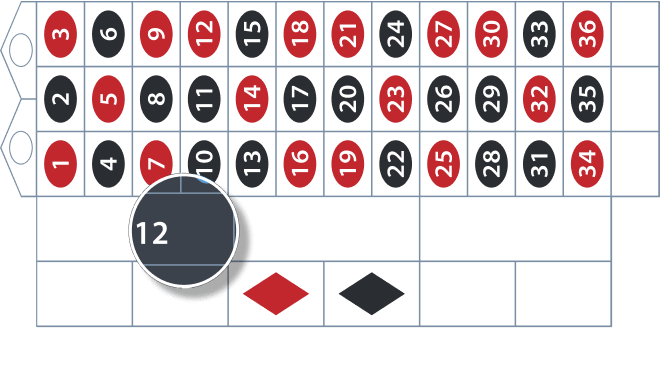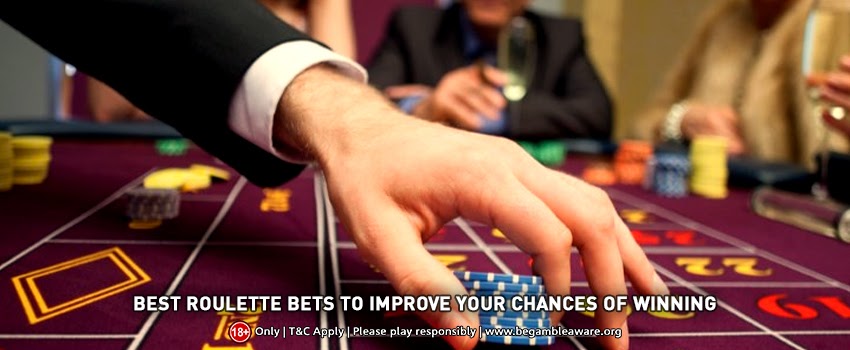Roulette is a fun game to play, whether it’s by yourself online or live with other players. But it can be sort of tricky to learn at first with all the different types of bets you can make – especially if you play live. The challenge with playing live is that many of your bets are made as the wheel is spinning. A 5-number bet (6:1) is one of the worst roulette bets that you can make. Also known as a top line bet, a 5-number bet involves covering 0, 00, 1, 2, and 3 when you play American roulette. What makes this such a bad bet, we hear you ask? Well, roulette probability suggests that such a bet.
Roulette Bets And Payouts
- Roulette Analysis
- Miscellaneous
Introduction
Some single-zero roulette wheels allow a convenient way to bet on a large sector of wheel. Each sector bet is a combination of conventional bets that cover a particular sequence of numbers on the wheel. While these bets could be made by hand, a table that allows sector betting will conveniently divide up a single wager into the requisite smaller wagers to cover a sector. Following is some roulette terminology to help explain how the sector bets are comprised:- Straight up — A bet on a single number. Wins pay 35 to 1.
- Split — A bet on two adjacent numbers on the betting layout. Wins pay 17 to 1.
- Street — A bet on a row of three numbers on the betting layout. Wins pay 11 to 1.
- Trio — A bet on three adjacent numbers on the betting layout, one of them being zero. Wins pay 11 to 1.
- Corner — A bet on four adjacent numbers on the betting layout. Wins pay 8 to 1.
Jeu Zero
Jeu Zero translates to “game zero” in English. It is a way of covering the seven numbers from 12 to 15 on the wheel. Bets should be evenly divisible by four. It is achieved by dividing the total wager into the following bets:
- Splits: One unit each on 0-3, 12-15, 32-35
- Straight up: One unit on 26
The following table shows the overall return table for a bet of four units. The return column is the product of the probability, win, and ¼. The reason for dividing by four is to show the return compared to the total four-unit bet. The lower right cell shows a house edge of 2.70%.
Jeu Zero
| Numbers | Net Win | Combinations | Probability | Return |
|---|---|---|---|---|
| 26 | 32 | 1 | 0.027027 | 0.216216 |
| 0,3,12,15,32,35 | 14 | 6 | 0.162162 | 0.567568 |
| All other | -4 | 30 | 0.810811 | -0.810811 |
| Total | 37 | 1.000000 | -0.027027 |
Voisins du zéro

Voisins du zéro translates to “neighbors zero” in English. Note that the Voisins du zéro sector overlaps the Jeu Zero sector. It is a way of covering the 17 numbers from 22 to 25 on the wheel. Bets should be evenly divisible by nine. It is achieved by dividing the total wager into the following bets:
- Splits: One unit each on 4-7, 12-15, 18-21, 19-22, 32-35
- Trio: Two units on 0-2-3
- Corner: Two units on 22-26-28-29

The following table shows the overall return table for a bet of nine units. The return column is the product of the probability, win, and 1/9. The reason for dividing by nine is to show the return compared to the total four-unit bet. The lower right cell shows a house edge of 2.70%.
Voisins du zéro
| Numbers | Net Win | Combinations | Probability | Return |
|---|---|---|---|---|
| 0,2,3 | 15 | 3 | 0.081081 | 0.135135 |
| 22,18,29,7,28,12,35,26,32,15,19,4,21,25 | 9 | 14 | 0.378378 | 0.378378 |
| All other | -9 | 20 | 0.540541 | -0.540541 |
| Total | 37 | 1.000000 | -0.027027 |
Le Tiers du Cylindre
Le tiers du cylinder translates to “third of the wheel” in English. It is a way of covering the 12 numbers from 27 to 33 on the wheel. Bets should be evenly divisible by six. It is achieved by dividing the total wager into the following bets six split bets: 5-8, 10-11, 13-16, 23-24, 27-30, 33-36.
The following table shows the overall return table for a bet of six units. The return column is the product of the probability, win, and 1/6. The reason for dividing by six is to show the return compared to the total four-unit bet. The lower right cell shows a house edge of 2.70%.
Le Tiers du Cylindre
| Numbers | Net Win | Combinations | Probability | Return |
|---|---|---|---|---|
| 27,13,36,11,30,8,23,10,5,24,16,33 | 12 | 12 | 0.324324 | 0.648649 |
| All other | -6 | 25 | 0.675676 | -0.675676 |
| Total | 37 | 1.000000 | -0.027027 |
Orphelins
Orphelins translates to “orphans” in English. It is a way of covering two sections on the wheel that are not covered by any of the other sector bets, namely 17 to 6 and 1 to 9. Bets should be evenly divisible by five. It is achieved by dividing the total wager into the following bets:


- Splits: One unit each on 6-9, 14-17, 17-20, 31-34
- Straight up: One unit on 1
Note that the number 17 is covered by two different spit bets. The following table shows the overall return table for a bet of five units. The return column is the product of the probability, win, and 1/5. The reason for dividing by five is to show the return compared to the total four-unit bet. The lower right cell shows a house edge of 2.70%.
Orphelins
| Numbers | Net Win | Combinations | Probability | Return |
|---|---|---|---|---|
| 1 | 31 | 1 | 0.027027 | 0.167568 |
| 17 | 31 | 1 | 0.027027 | 0.167568 |
| 6,9,14,20,31,34 | 13 | 6 | 0.162162 | 0.421622 |
| All other | -5 | 29 | 0.783784 | -0.783784 |
| Total | 37 | 1.000000 | -0.027027 |
Neighbors
Surrounding the five sector bets mentioned above will be what looks like a racetrack consisting of all numbers from 0 to 37 in the same order as on the wheel.
The purpose of the racetrack is to conveniently bet any consecutive five numbers on the wheel. These are known as Neighbors bets. For example, if you wish to cover the five consecutive numbers with 23 in the middle (30, 8, 23, 10, 5) you would make a Neighbors bet on 23. Such a bet should be evenly divisible by five, which will be divided into five straight up bets on each of the five numbers in the sector.
At some Internet casinos and electronic roulette games, Neighbors bets may be made to cover consecutive sectors of 3, 5, or 7 numbers. Bets should be evenly divisible by the size of the sector.
The following table shows the return for Neighbors bets on a three-number sector. The return column is the product of the win, probability and 1/3. The reason for dividing by 3 is to show the return relative to a three-unit bet. The lower right cell shows a house edge of 2.70%.
Three-Number Neighbors
| Numbers | Net Win | Combinations | Probability | Return |
|---|---|---|---|---|
| Win | 33 | 3 | 0.081081 | 0.891892 |
| Loss | -3 | 34 | 0.918919 | -0.918919 |
| Total | 37 | 1.000000 | -0.027027 |
The following table shows the return for Neighbors bets on a five-number sector. The return column is the product of the win, probability and 1/5. The reason for dividing by 5 is to show the return relative to a five-unit bet. The lower right cell shows a house edge of 2.70%.
Five-Number Neighbors
| Numbers | Net Win | Combinations | Probability | Return |
|---|---|---|---|---|
| Win | 31 | 5 | 0.135135 | 0.837838 |
| Loss | -5 | 32 | 0.864865 | -0.864865 |
| Total | 37 | 1.000000 | -0.027027 |
The following table shows the return for Neighbors bets on a seven-number sector. The return column is the product of the win, probability and 1/7. The reason for dividing by 7 is to show the return relative to a seven-unit bet. The lower right cell shows a house edge of 2.70%.
Seven-Number Neighbors
| Numbers | Net Win | Combinations | Probability | Return |
|---|---|---|---|---|
| Win | 29 | 7 | 0.189189 | 0.783784 |
| Loss | -7 | 30 | 0.810811 | -0.810811 |
| Total | 37 | 1.000000 | -0.027027 |